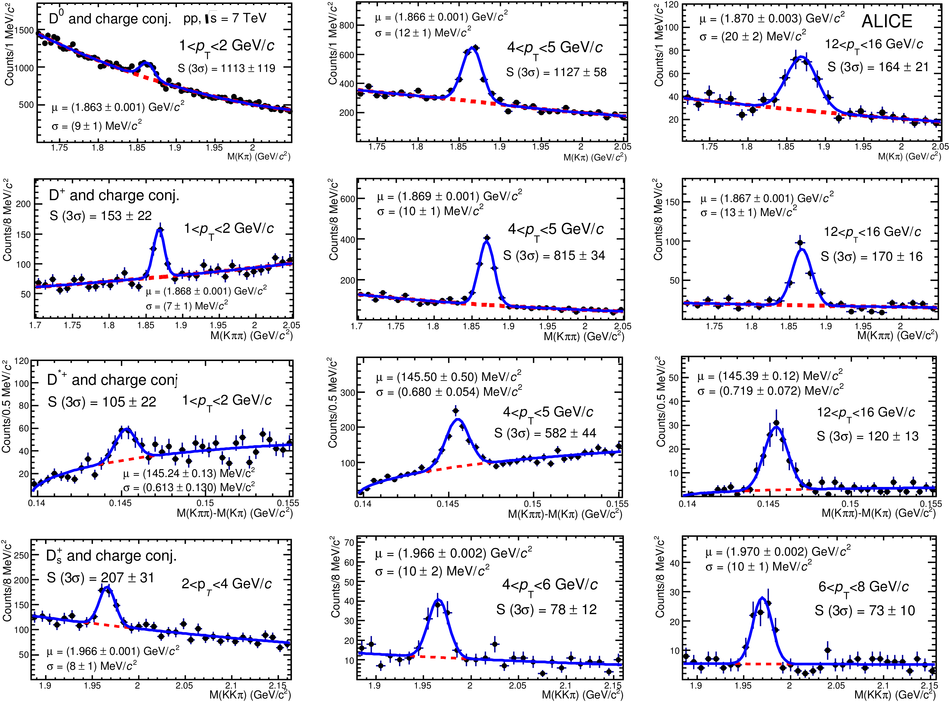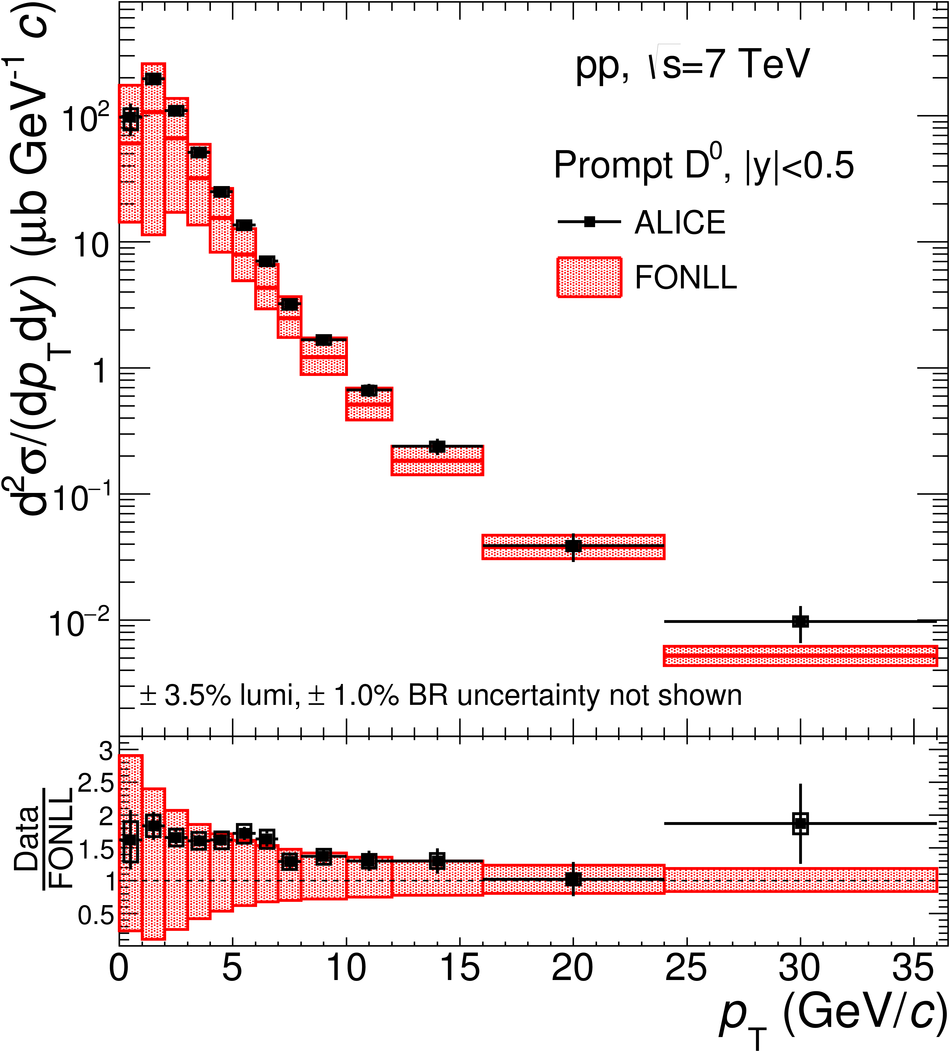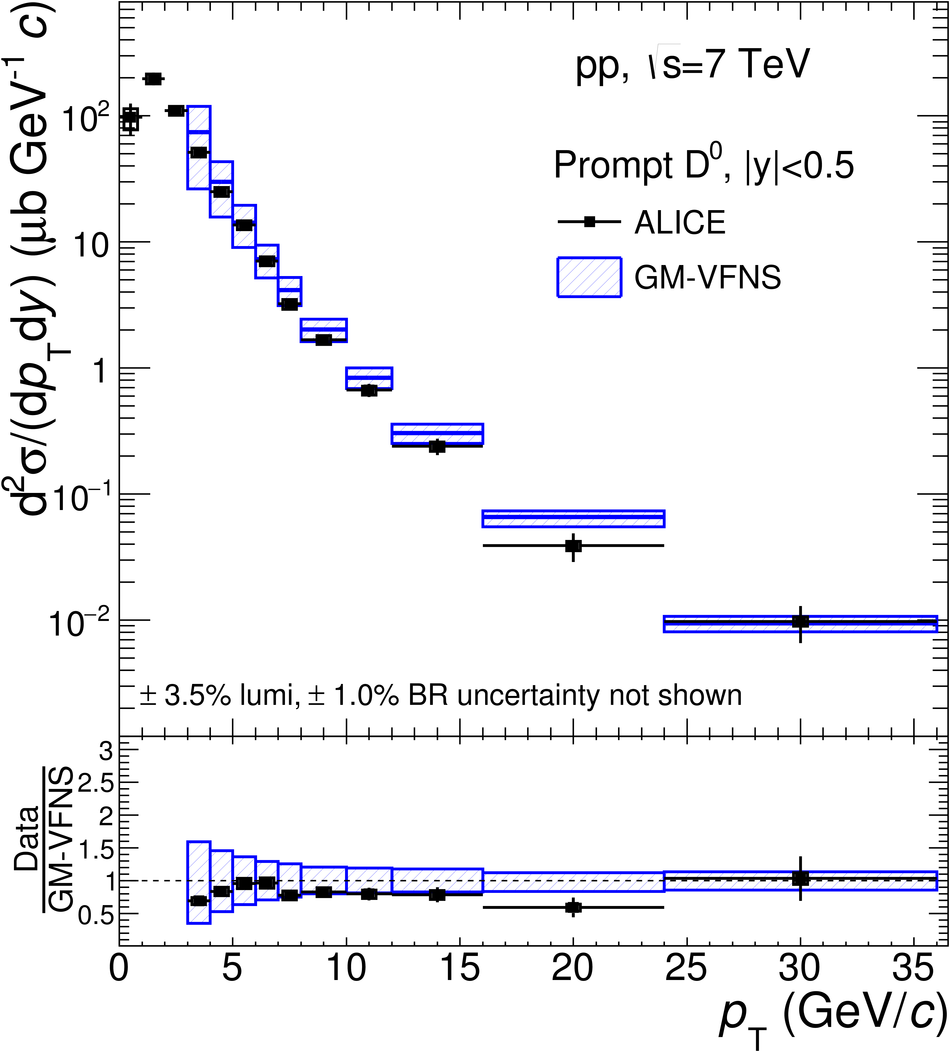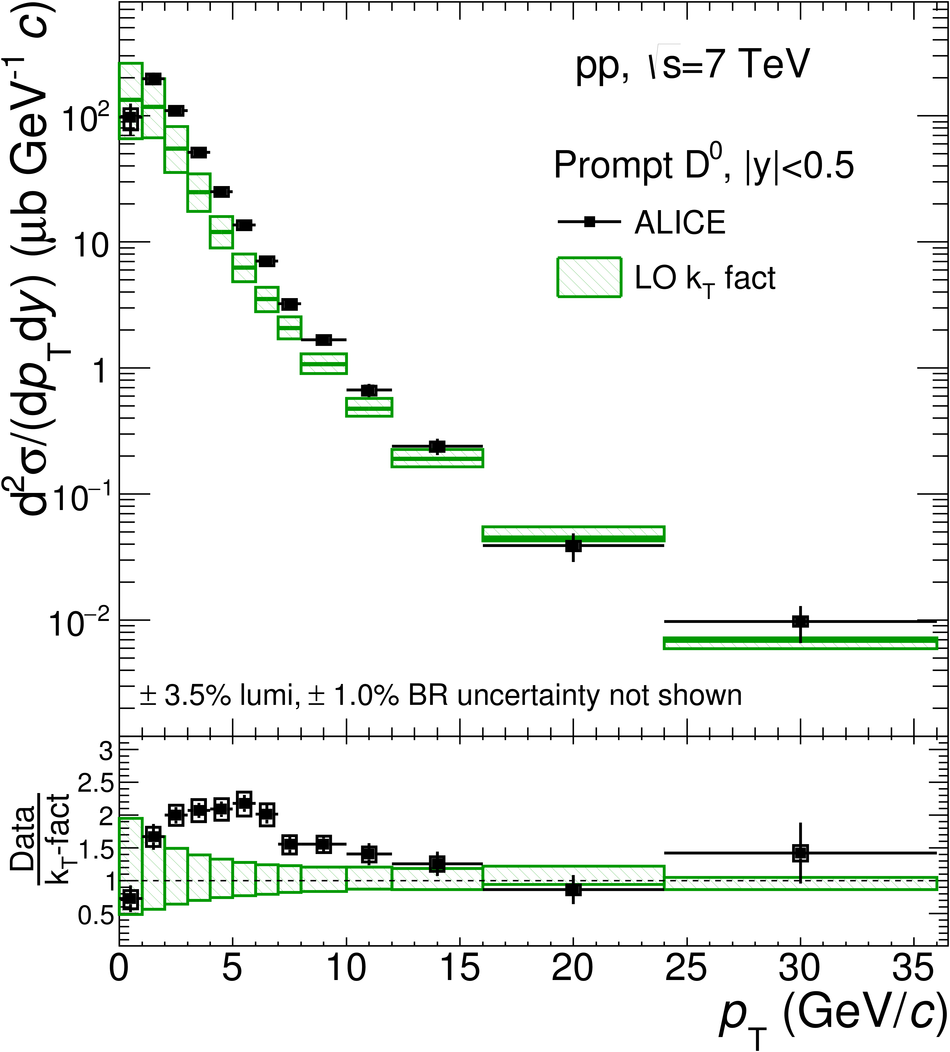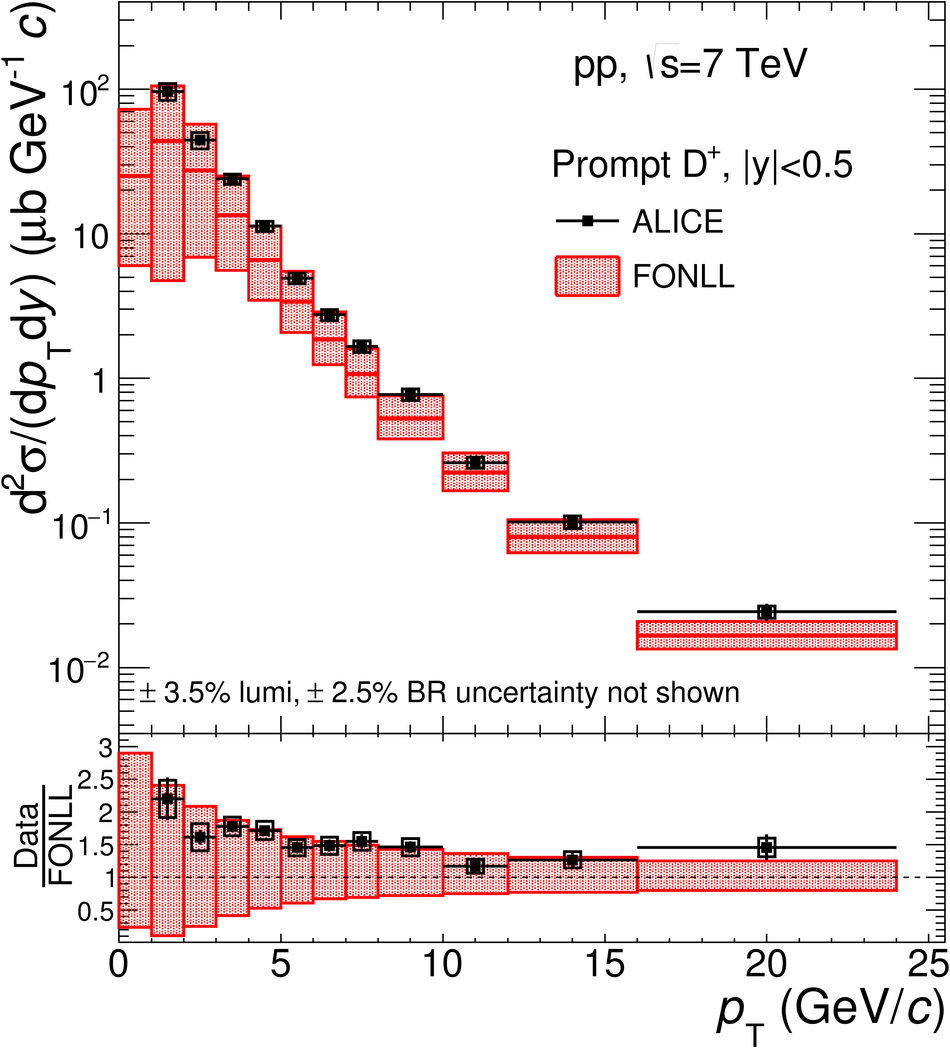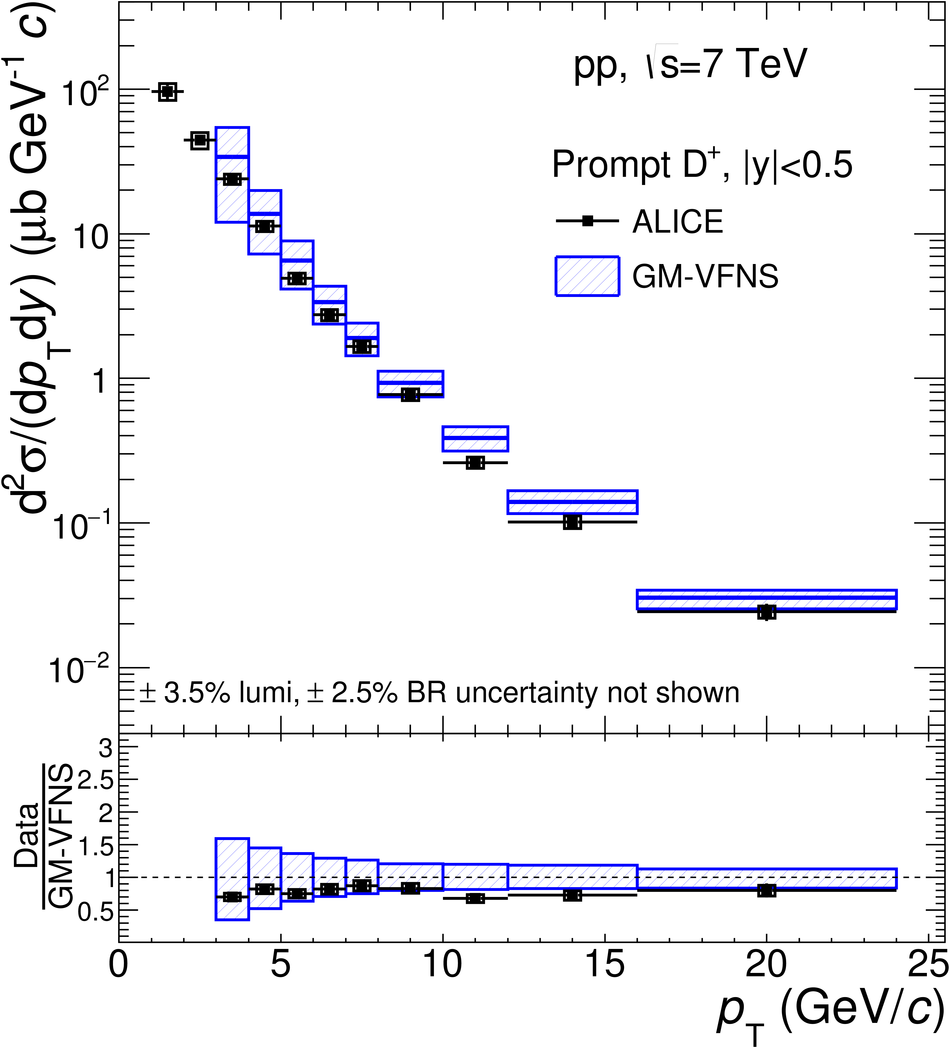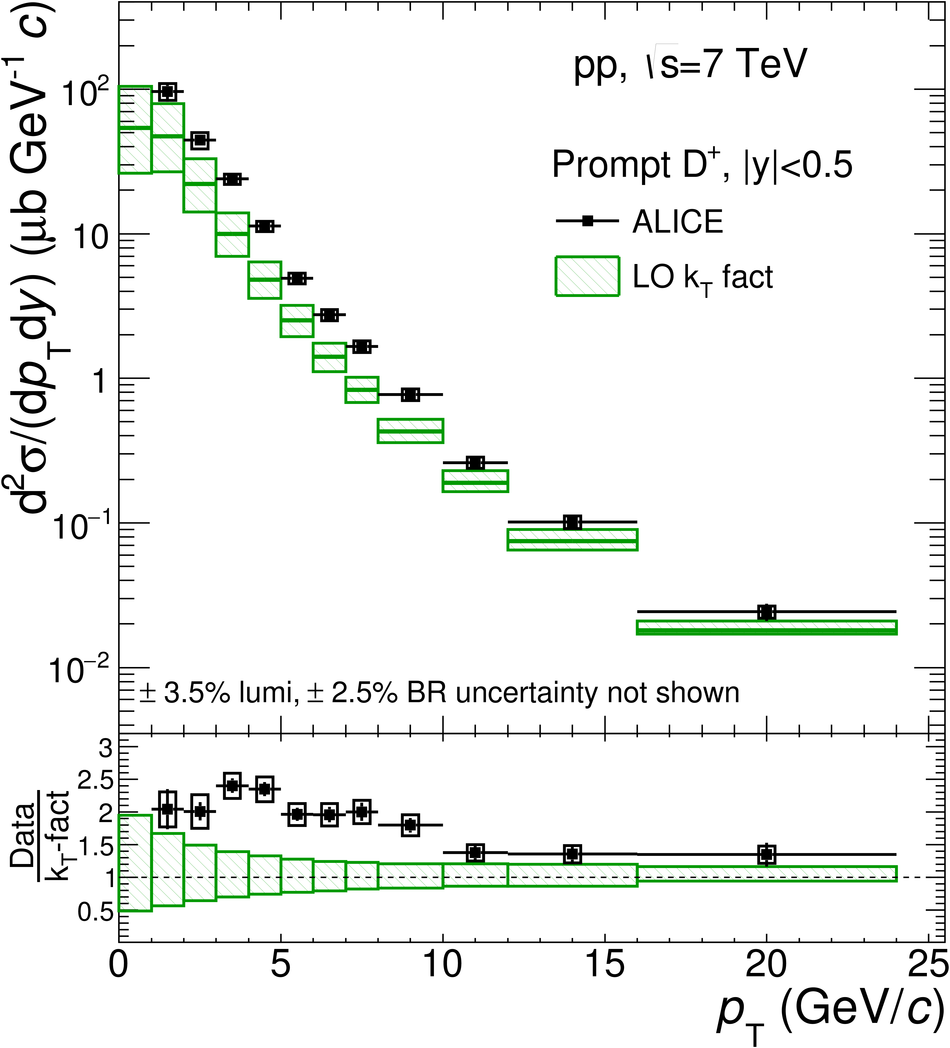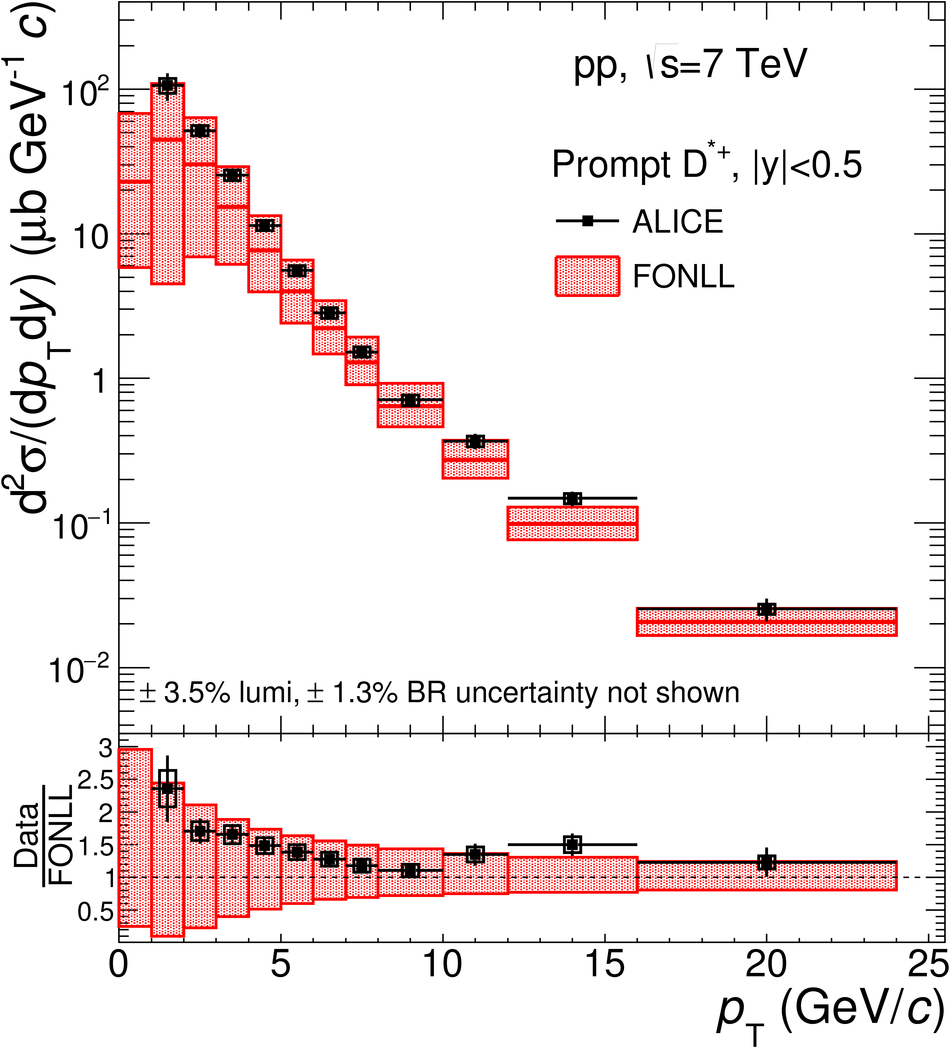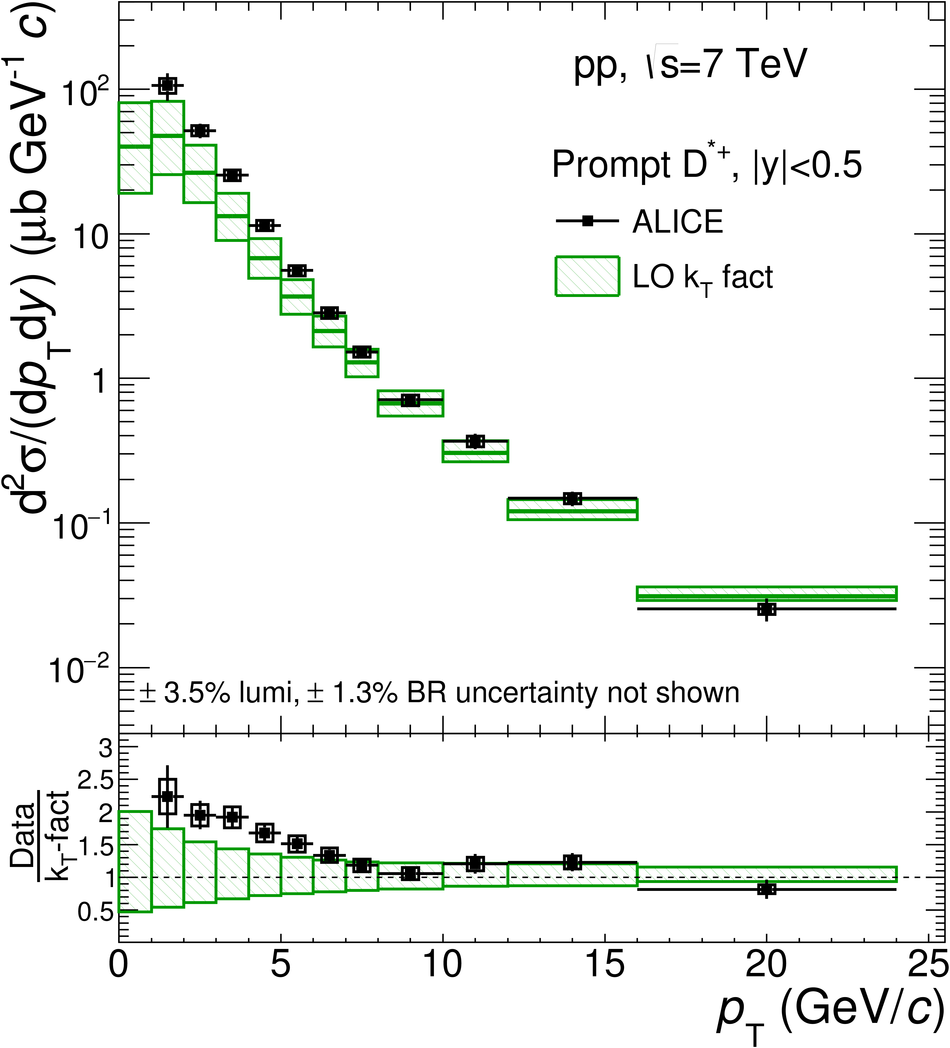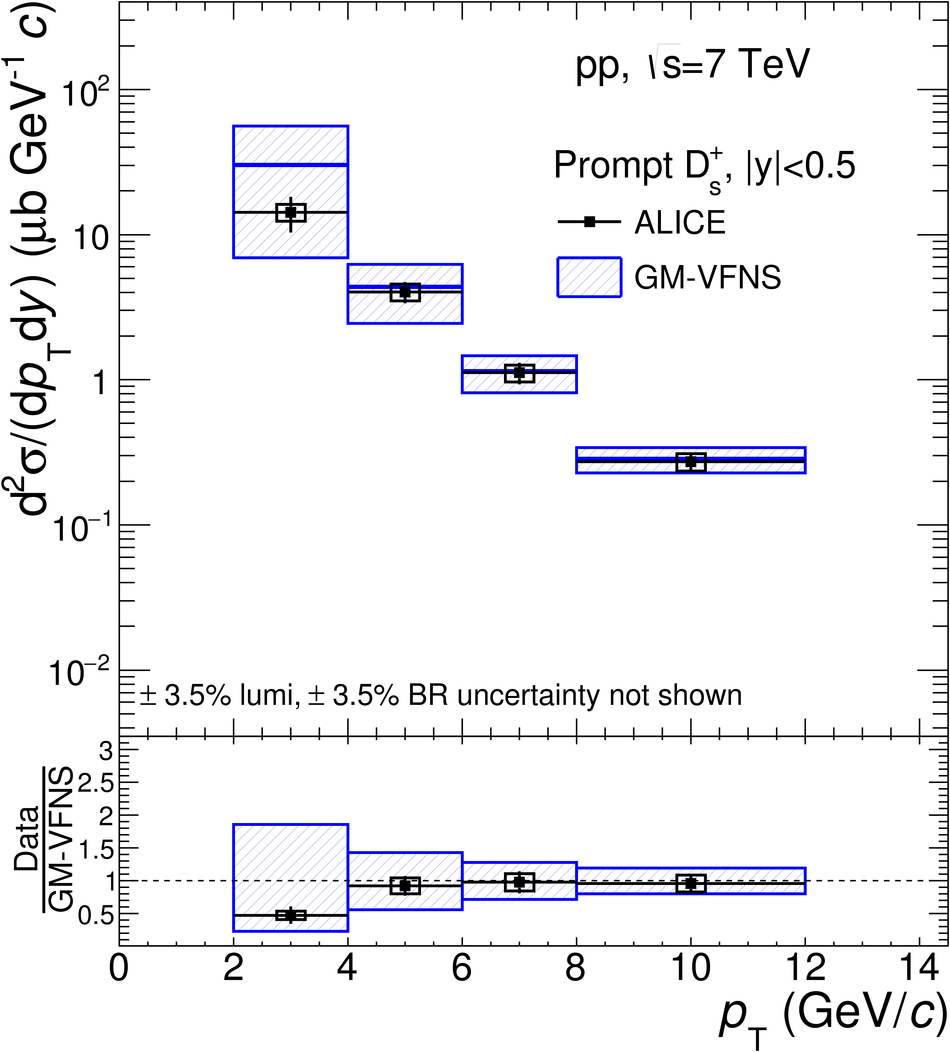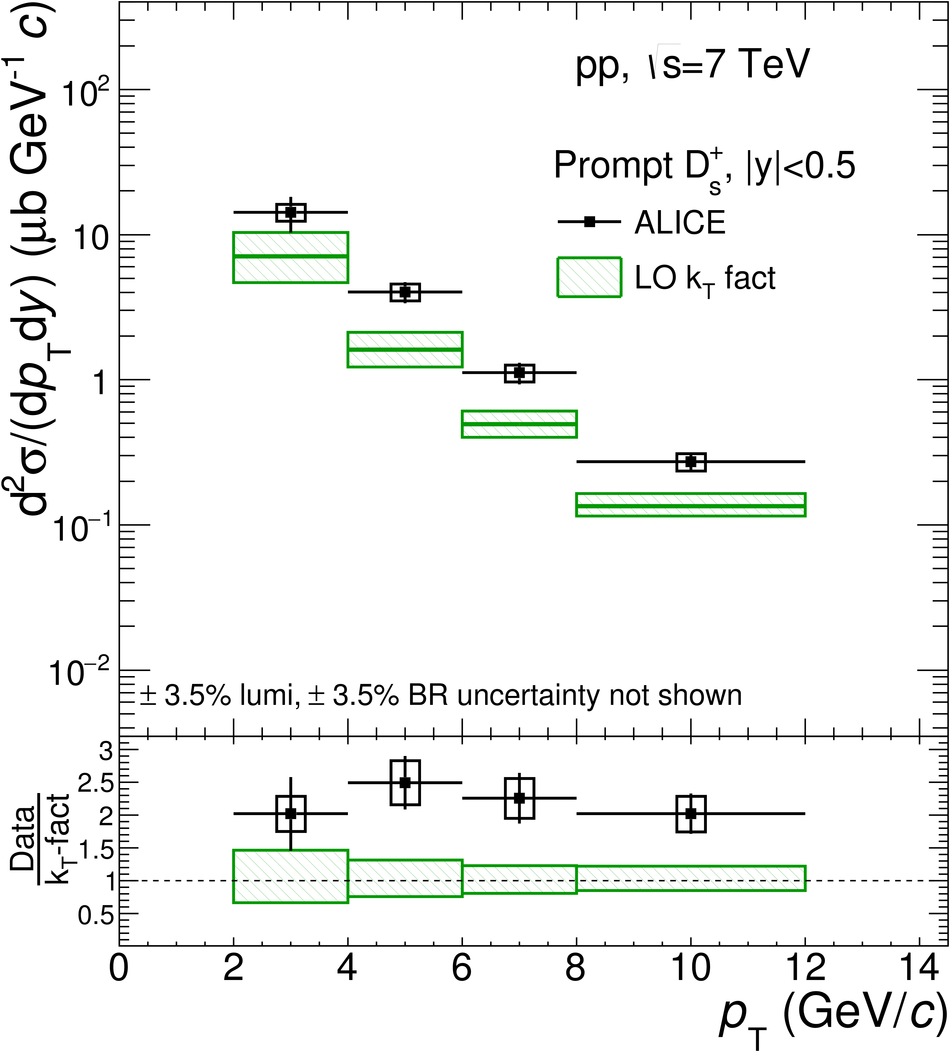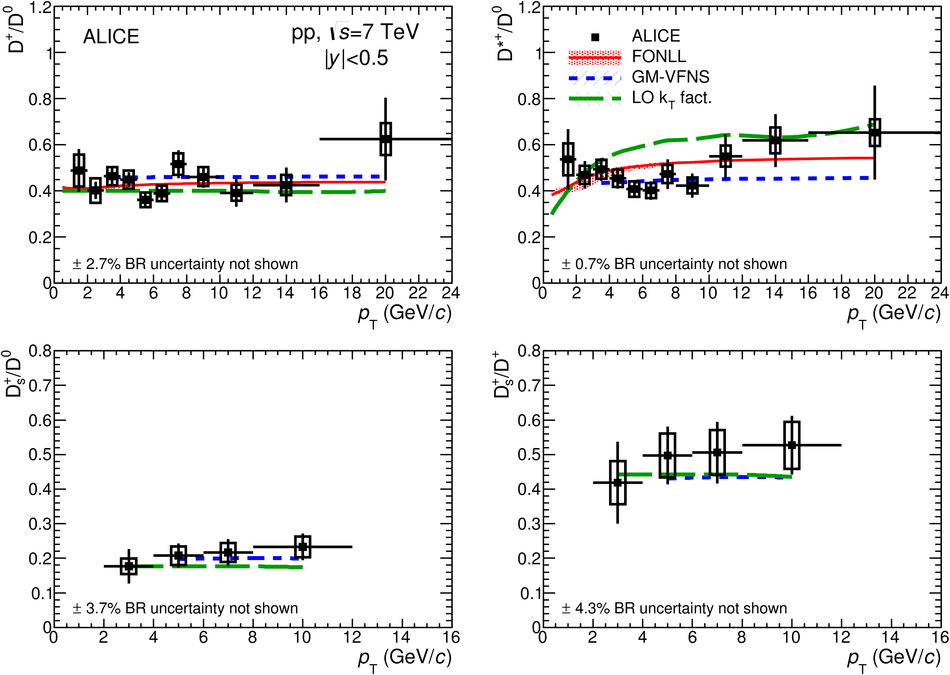The production cross sections of the prompt charmed mesons ${\rm D^0}$, ${\rm D^+}$, ${\rm D^{*+}}$ and ${\rm D_s^+}$ were measured at mid-rapidity in proton-proton collisions at a centre-of-mass energy $\sqrt{s}=7$ TeV with the ALICE detector at the Large Hadron Collider (LHC). D mesons were reconstructed from their decays ${\rm D}^0 \to {\rm K}^-\pi^+$, ${\rm D}^+\to {\rm K}^-\pi^+\pi^+$, ${\rm D}^{*+} \to {\rm D}^0 \pi^+$, ${\rm D_s^{+}\to \phi\pi^+\to K^-K^+\pi^+}$, and their charge conjugates. With respect to previous measurements in the same rapidity region, the coverage in transverse momentum ($p_{\rm T}$) is extended and the uncertainties are reduced by a factor of about two. The accuracy on the estimated total $\rm c\overline c$ production cross section is likewise improved. The measured $p_{\rm T}$-differential cross sections are compared with the results of three perturbative QCD calculations.
Eur.Phys.J. C77 (2017) 550
HEP Data
e-Print: arXiv:1702.00766 | PDF | inSPIRE
CERN-EP-2017-020

